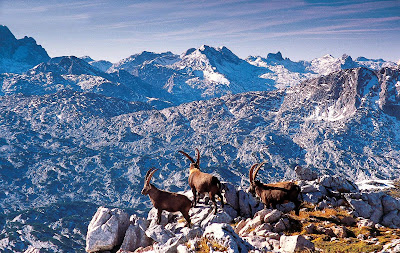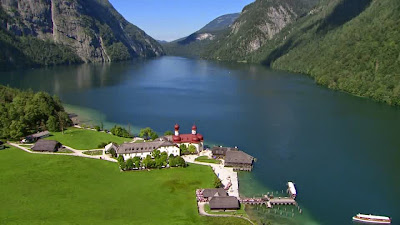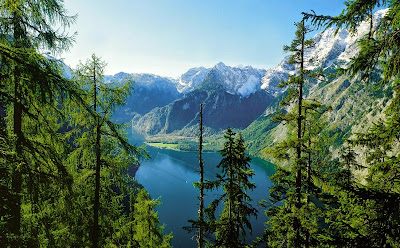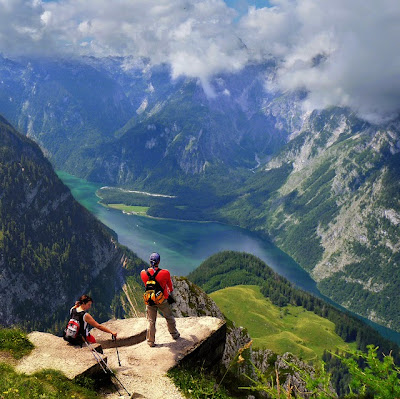Berchtesgaden National Park
Is in the south of Germany, on its border with Austria, the national park was established in 1978 to protect the landscapes of the Berchtesgaden Alps. Headquartered in the town of Berchtesgaden, the park was designated a UNESCO Biosphere Reserve in 1990.
It is the only alpine biosphere reserve in Germany with an elevation of up to 2,700 meters above sea level. However, the transition zone is situated in low elevated areas in the north of the mountain ranges.
History
The first nature conservation area in the Berchtesgaden Alps was created in what is currently the southeastern part of the park in 1910. It had an area of 8,600 hectares and was organized according to the model of National Parks in the United States. In 1919, the mountain hotel of St. Bartolomew was built. In March 1921, the area was expanded to 20,400 hectares. At the time, it included both the Watzmann and the Hochkalter. During World War II, Hermann Göring, who, among other responsibilities, was teh State Minister of Forestry and Hunting, declared the area around Obersee a particularly protected natural conservation area. In addition, six areas formally protecting the fauna were desgnated.
The initiative to create a national park was first introduced in 1953. In the 1960s, a concurrent initiative to buid an aerial lift to the summit of Watzmann was put forward. It clearly contradicted the plans for creation of a national park, and in the end it was abandoned in 1972 by the decision of the Free State of Bavaria, which also decided to create a national park. Finally the park was opened on August 1, 1978, and had a total area of 208.08 km². In the 2010, the park was expanded. As of 2012, its area was 210 km².
 |
| Capra ibex in front a the Watzmann glacier. |
Location
Berchtesgaden National Park is located in the southeast of Germany, in Bavaria and adjoining the Austrian Salzburg region. The park is located in the mountainous area south of the town of Berchtesgaden. the Eastern, southern, and western boundaries of the park coincide with the state border between Germany an Austria. The area of the park is economically undeveloped, and there are no settlements. in the center of the park is a large lake, the Königssee, which is elongated from the south to the west and is the source of the Königsseer Ache, a right tributary of the Salzach. A smaller lake, the Obersee, is located above the Königssee and drains into it.
The whole area of the park belongs to the drainage basin of the Salzach, and , consequently, of hte Danube. West of the lake is the massif of Watzmann, and beyond that, separated by the Wimbachtal valley, the massif of Hochkalter. The Watzmann is the third highest mountain massif in Germany. The watzmann Glacier, located below the eastern face of the Watzmann, and the Blaueis, adjacent to the Hochkalter, are two of the five glaciers in Germany.
Tourism
There are six information centers, located in Berchtesgaden, in Ramsau, and inside the park. The park maitains an extensive network of trails. One of the cultural attractions of the park is the pigrimage Church of Saint Bartholomew, located on the Königssee.
 |
| Church of St. Bartholomew |
Each year around 1.5 million guests visit Berchtesgaden National Park. The area is covered by a network of some 260 km of walking paths and steep mountain trails. From walks accessible to the physically impaired to the challenges of a via ferrata, there is something her for everyone. In summer numerous huts in the high mountain pastures, offer refreshments and provide overnighting for those who wish to spend several days exploring the national park.
All important information and tips about your visit to the national park, the National Park Centre "Haus der Berge" in Berchtesgaden. Opening times, admission prices, Arrival information and further information about the National Park Centre, visit:
 |
| Königssee lake |
In addition, the following information points are located directly with small exhibitions in the National Park.


No comments:
Post a Comment